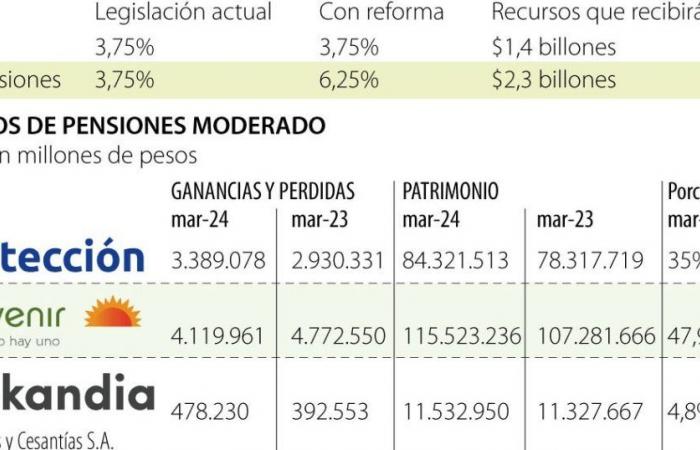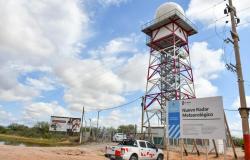The definition of the distribution of contributions in the new system is contained in article 23, which maintained the 16% contribution, according to the base income, in the contributory pillar. Employers will pay 75%, and workers will assume 25%.
For those who are in the medium premium component, those who have a base income of up to 2.3 minimum wages, will allocate the contribution to the “common old age fund”, which It is managed by Colpensiones, and also the savings fund of the contributory pillar, which will be managed by the Banco de la República.
These resources will be distributed as follows: three points to finance administration expenses in the average premium componentof the Contributory Pillar, and the resources necessary to pay for pension insurance. Of that contribution, Colpensiones may allocate up to 1% to finance administration expenses.
For those who have individual savings, 13.2% of the contribution, that exceeds the threshold of 2.3 minimum wages, and up to 25 smlmv, will be allocated to the account where the person is keeping their money.
In that same salary range (2.3 – 25 smlmv), 1% of the contribution base income will be allocated to finance the savings fund of the Banco de la República. Also, 0.8% will cover the administration expenses in the individual savings component of the contributory pillar.
Finally, an additional 1% will be allocated, which will be transferred to Colpensiones, to cover the payment of pension insurance, or the scheme determined by the Government.
“In no case may resources from the old-age pension reserves be used in the Contributory Pillar. nor from the Contributory Pillar Savings Fund, for administrative expenses or other purposes other than pension financing.“, highlights paragraph 1 of article 23.
The norm added a transitional paragraph where it defines that the maximum charge of the AFPs, as an administration commission, will be 0.7%, on all the assets under the management of said resources, a value that will be maintained until the moment in that the pension is consolidated.
Asofondos rejects accusations after approval of the pension reform
The approval of the pension reform generated strong clashes between different public and private sectors. While some affirm that the process in Congress complied with everything stated in the law, others assure that the private sector was compromised, which ended with the passage of the bill.
In these discussions, Asofondos’ response arises, representing private funds, to The allegations indicate that the AFP met with some congressmen, and agreed that the reform would be approved just as the articles were passed in the Senate.
According to a letter signed by the president of Asofondos, Andrés Calle, Asofondos did not meet with the president of the House of Representatives, Andrés Calle, nor with other congressmen to agree on the reform.
“As we clarified at the time, the figure of $2.8 billion results from multiplying 0.7% by the balance of $405 billion, which is totally incorrect and overestimated because the 0.7% commission It does not apply to the special programmed retirement fund, nor to the accounts of the people who will make up the transition regime, to name the most relevant”Montenegro highlights in the statement.
The president of Asofondos explained that the 0.7% commission is annual and generates income. Furthermore, despite the controversial approval, the AFP will continue to defend Colombians’ pensions.
In the letter, Montengro also defended himself against the accusations made by Vicky Dávilawhere he suggests that some businessmen and congressmen have met to expedite President Gustavo Petro’s agenda, putting the intentions of thousands of Colombians at risk.
- For Latest Updates Follow us on Google News






